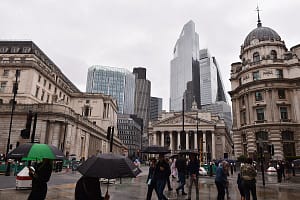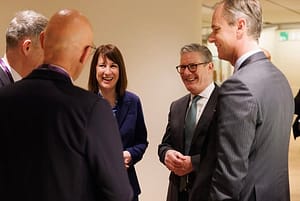Ahead of the interest rate decision at midday, Newspage asked economists, traders and mortgage brokers whether the Bank of England should cut the base rate today — and if it will.
One said: “The MPC loves a slow dance so they won’t cut today. The data’s not screaming for it. Should they?
If they were focused on economic growth over price stability, they might, but the inflation hawks will likely hold sway with inflation already at 3% and forecast to climb further.”
Another added: “Once new fiscal measures are introduced by the UK Government in April, we will begin to see costs rise for UK businesses and this may push the Bank of England into cutting rates to make lending cheaper to stimulate the economy further.” Views below.
Harry Mills, Director at Oku Markets said, “Should the Bank of England cut rates today? In my opinion, they categorically should. January saw a contraction in UK GDP, and the quarterly numbers point to a stalling economy. The April tax rises will be bad for business and bad for the economy.
“Translate: more pain. Monetary policy transmission is thought to take somewhere between six months (at the low end) and eighteen months (at the high end), so today’s decision will truly be felt in 6-18 months’ time. The path to target inflation was always expected to be bumpy, but we can’t afford a situation where the economy is shrinking and rates are still painfully high. They should cut and get on with it.”
Tony Redondo, Founder at Cosmos Currency Exchange said, “The MPC loves a slow dance so they won’t cut today. The data’s not screaming for it. Should they? If they were focused on economic growth over price stability, they might, but the inflation hawks will likely hold sway with inflation already at 3% and forecast to climb further.
“Market swaps peg a 95% chance of a hold today, with only a 5% whisper of a 25-basis-point trim to 4.25%. It’s more likely we will see a “dovish hold”, no cut, but a hint at future easing given the UK economy is showing signs of stagnation with growth expectations halved to 0.75% for 2025 amid global uncertainty and trade tensions.”
Gabriel McKeown, Head of Macroeconomics at Sad Rabbit added, “As Threadneedle Street prepares for its rate decision, Governor Bailey is walking a tightrope between maintaining inflation-taming credibility and providing economic life support, with a vote to maintain rates looking exceedingly likely.
“This is somewhat understandable given the continued inflationary pressures and forecast, with an uptick to 3.0% in January and expectations that this could rise further to 3.7% in Q3. However, supporting a sluggish economy is going to start becoming more of a priority, especially as the full impact of the Spring Statement is digested.
“Furthermore, this decisively cautious approach may be coming to an end as the previous MPC meeting revealed growing cracks in the united front, as despite six members, including Bailey, voting to maintain the status quo, three dissenters pushed for a 25bps cut. The question remains whether the MPC doves will manage to outmanoeuvre the hawks at some point in 2025 or if inflation concerns will keep rates higher for longer.”
Prem Raja, Head of Trading Floor at Currencies 4 You said, “The Bank of England is expected to hold rates at 4.5% with no cuts expected imminently. The main thing investors should look for is how the vote split looks. As it stands, Monetary Policy Committee member Dhingra is expected to vote for a 25bps cut but no other members have made their views known publicly.
“This suggests Threadneedle Street will keep rates where they are for the time being, and while we are expecting more cuts as the year progresses there isn’t any urgency for this to happen.
“Once new fiscal measures are introduced by the UK Government in April, we will begin to see costs rise for UK businesses and this may push the Bank of England into cutting rates to make lending cheaper to stimulate the economy further. For now I believe the Bank of England will be in “wait and see” mode until the new fiscal measures are introduced in April.”
David Belle, Founder and Trader at Fink Money said, “The Bank of England should 100% cut rates today. The BoE and the Bank of Japan are the two central banks (after the Fed) with the largest difference between policy rate and inflation.
“We must remember that monetary policy in developed economies has roughly a 12-48 month lag where effects are fed through into the real economy. This means they need to be planning for a year ahead.”
Get real time update about this post category directly on your device, subscribe now.






Leave a Comment